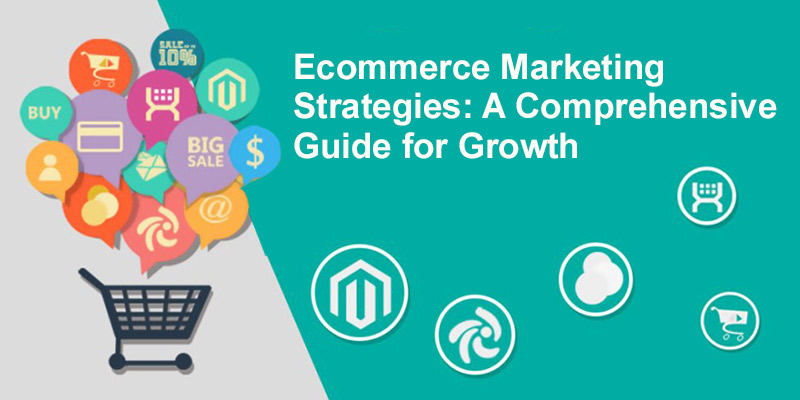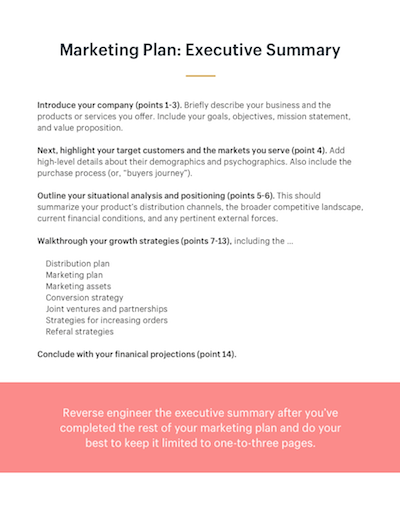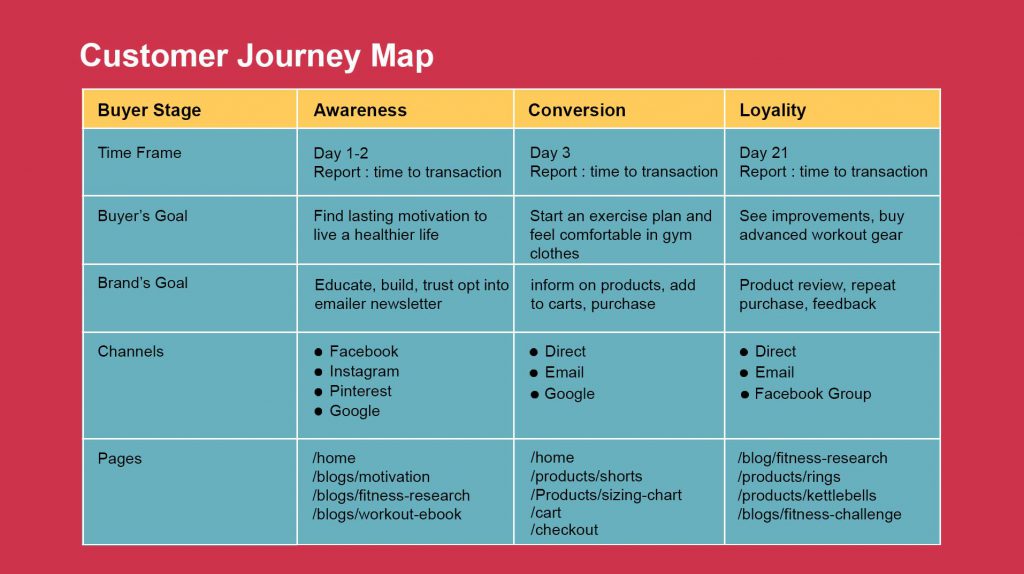I hope you enjoy reading this blog post.
If you want to get more traffic, Contact Us

Click Here - Free 30-Minute Strategy Session
Be quick! FREE spots are almost gone for this Month. Free Quote

Among all the websites that are out there in the world wide web, eCommerce sites are the most challenging when it comes to SEO. So having a sound eCommerce marketing strategy in place should be your top most priority.
The competition is too stiff and because the primary reason is to generate revenue right from the first visit of your potential customer, the margin for error is almost non-existent.

Click Here – Free 30-Minute Strategy Session
Be quick! FREE spots are almost gone for this Month
Just to give you an idea about how seriously eCommerce website owners, such as yourself, are taking SEO, I’d like to share my recent experience.
I was looking for a pair of tennis shoes that my favorite player wore during a recent tournament. I was just curious how it looks from a closer view without any intention of buying. However, I was astonished to see the top 5 search results. All of them, all five, were eCommerce sites.
Not even the official site of the brand featured in the top 5! That’s how tight the game is.
This article aims to take you through all the steps involved with coming up an effective eCommerce marketing strategy so you can be up there with the winners.
Ready for it? Let’s start then.
Whether your investors want a high level information about the feasibility of your project or your employees want finer details to understand their role, this document can and should guide you to see both the forest and the trees.
As you can see, right from defining your primary goals and objectives right through to coming up with financial projections, you will have all the necessary information and data to get the ball rolling.
Let’s explore each of the points in the executive summary in greater detail.

As a businessman who wants to start an eCommerce site, you know the importance of defining your goals and objectives clearly. However, there are specific goals and objectives that you need to have in place from the perspective of an eCommerce site.
When it comes to setting your goals, ask yourself the following questions (It’s just a start. You might want to explore all the possibilities and come up with as many questions as possible.)
Your answers to these questions should become your goals. Once you have your goals, your objectives are the means to achieving them.
Let’s say one of your goals is to increase your revenue by 25% year on year.
Your corresponding objective should be to proportionally increase your customer base depending on average revenue you generate per customer.
Don’t worry about how you are going to achieve the objectives just yet.
As you start to implement the steps in your executive summary, you will find that there’s enough space in the market for it to be receptive and you will realize the tactics necessary to achieve your objectives.
Again, you need ask yourself several questions before coming up mission statement and value proposition.
You may not cover all the points the arise out of this brainstorming session.
However, once you have a clear picture of what your business stands for and why, you will be able to come up with the essence that truly defines your company.
So let’s see what these questions are.
Once you have all these questions answered (and possibly some more of your own), you will be in a good position to craft a mission statement.
Here’s a great example of an established shoe company that’s been in business for over a century now.
“Since 1915, Lexington Shoes has outfitted gentlemen with luxury, hand-crafted footwear. Our founder Charles Lexington believed the only way to deliver a premium experience was to make eye contact, listen deeply and make recommendations based on the person, not the products on the shelf.”
“100 years and 3 generations later, we stand by this value and feel its increasing importance in our ever connected, too busy to slow down and see each other world.”
The value proposition is quite different from the mission statement. It states the promise of value delivered to the customers through the features and consequently the benefits of the product.
The value proposition has the following elements:
Both your mission statement and your value proposition must clearly appear on both your home page and other touch points on your site.
In this section, you will get into the minds of your target customers to better get their understanding of their needs and pain points.
What is it that’s missing from your competitors that your product can provide? That’s the key question that you should be able to answer and come up with a eCommerce marketing strategy to position your brand within your target demography.
Some of the key information you’ll collect include:

One good source for information regarding the demography is your government’s official census site. There are also numerous other sources on the web from where you fetch this data.
Another set of data that you need collect includes their lifestyle and preferences strongly influenced by socio-economic conditions.
The kind of psycographic information include:
With this information, you should be able to come up with a strategy for brand positioning, creative direction for ads, the market segments you want to target, etc.
Another advantage of understanding your customer base is being able to “speak” their language across all channels of marketing communication. This translates to efficient deployment of creative assets and higher ROI.
You can also understand whether your product has a mass appeal or niche.
Which pain points of your customer does your product address?
This gives you a good understanding of how your customers perceive your brand in relation to your competitors’.
Understand the decision making tree of the purchasing process.
The importance of focusing on customer journey cannot be stressed enough. You can get a ton of valuable information about customer journey from the Shopify’s article about the same topic.

Finally, get an idea about the market size for a thorough understanding.
The way to future can be found by a clear understanding of the present. If you are an existing company, you should be rigorous in your approach and not be afraid of identifying your shortcomings.
For a new site, this exercise can further help to throw light on the market you are about to enter.
Situational analysis focuses on the following aspects:
Attributes:
The features of your product that benefits your customers. The overall brand positioning that tells your customers to buy from you instead of your competitors.
Pricing:What are your current pricing positions for various segments – Wholesale, Retail, etc. Do you offer any incentives or offers?
Distribution:
How easy do you make it for your users to get their product? Is your delivery network efficient and timely? What’s the complete process from order placing to product delivery?
Promotion:
What are the aggressive initiatives you are willing to undertake to promote your product to its fullest potential? Which are the campaigns that have delivered the results? Which campaigns failed?
The product distribution networking should focus on both delivery of products to your customers and sourcing of raw material/products from vendors and suppliers.
You should also focus on the source of traffic through the digital channel such as Facebook, PPC campaigns, Organic Search, etc.
If you are selling third-party products on your site, it becomes very important to understand how you are aligning your business with theirs.
Simply put, your competitors are the ones who sell same/similar products within the same geographical location using the same distribution channels.
Although easier said than done, an analysis based on your situational analysis (from previous section) is the perfect way to understand your competitor’s current status.
You may not gather all the information from the previous section. But you should make an attempt to collect as much information as possible
The process of assessing your current financial condition should be a comparative analysis of your sales and capital costs. You should also consider your assets and liabilities to get an overall picture.
Your sales analysis should be conducted in relation to various segments.
Overall industry sales and market share
By segments/ product categories:
By distribution channel:
By geographic region
Cost analysis should focus on marketing expenses so you can better leverage your position to achieve higher ROI.
This should give you an idea of which channels, geographic locations, markets,products, etc. to focus on.
It’s always good to be prepared for situations created by factors that are beyond your control. This gives you an edge over your competitors as they will be slower to respond and adapt to changing situations.
Some of the factors worth considering are:
Whether it’s a minor change in the technology or a major change in terms of legal or regulatory requirements, your contingency plan must be rigorous enough to weather the proverbial storm.
As you can see, this situational analysis is pretty tedious exercise with various actions to be taken. Therefore it’s a good idea to come up with a summary of key actions to be taken.
Depending on the information you obtained during the situational analysis, you will have to consider distribution channels, competitor positioning, geographical locations, etc.
Make sure that there are no overlap between distributors and competitors. If you cannot avoid it, you should not be too competitive with your pricing.
Aligning your brand positioning strategy with your distributors is another important factor you should consider during this exercise.
One of the statistics businesses live by is the percentage of margin. This number not only helps you the efficiency but also lets you make changes to your processes by forecasting it.
The end-to-end link that starts with procurement and ends with delivery is the nerve center through which the entire operation takes place.
By optimizing the time taken to complete the movement of materials and information along this path, you massively gain on key performance metrics profit margin and enhance another intangible but highly valuable metric, customer satisfaction.
The industry best practice is to have a logistics major as your shipping partner. By leveraging their sheer size, major logistics companies are able to deliver high level of performance at very reasonable costs
Promotion of your eCommerce website is mainly going to happen over the internet. So let’s focus on the various channels within online marketing.
There is a cost associated with each channel that is inline with the kind of audience it provides.
Although SEO and organic search results should be your number one priority, initially you will have to use paid marketing to gain initial traction.
Explore as many options from this list and add your channels if they fall under online marketing.
Collate all the digital promotional media you have created along with performance metric for each campaign. The list will include:
All eCommerce sites are built with only one intention – to convert a visitor to a customer. The desired action is for the visitor to purchase the product and to realize this online marketers swear by conversion rate metric.
Whether you are showcasing your product on a third-party eCommerce site or your own, you should regularly monitor your conversion rates. Don’t be afraid to experiment with different strategies.
On sites you own, you will be at greater liberty to make the changes than the sites that you don’t.
By offering them valuable shopping experience that’s a combination of various factors, you should be able to make your customers more frequently and for greater values.
This step is extensive and ongoing. So you need to do a bit of homework here about this.
A thorough understanding of your customer base will help to know what are the other products your customers are buying that are related to your own. Are there products out there that either supplement or complement your product?
Reach out sellers that sell such products and seek for mutually beneficial situations.
Here are the ways to get your customers to spend more while they are on your site:
This process is also a treasure trove of information to track which of your campaigns are working by tagging each of these strategies with various campaigns you are running.
Peer referrals and word-of-mouth recommendations are highly valuable as they also pass on instant credibility and trust to the new customers. If your product is the perfect option for your customers, they will recommend you.
However, that should not deter you from being proactive and encourage your customer to refer.
Your frequent buyers are most likely to refer and therefore you should start with this group. Come out with creative ways to get your customers refer brand new ones.
As you understand each of the steps covered thus far, you will notice several cost and revenue propositions. Collate all possible costs and map them with their corresponding revenue to come up with a realistic final projection for the future.
You may not project accurate financial positions but you will have a fair idea about the possible situations.
As you move through time, you will fine tune each of these steps by adapting to the prevalent situations and therefore your projections will also get better.
By now you would have guessed that although optimizing eCommerce sites for SEO is far from easy, a good eCommerce marketing strategy can get you there in a controlled and phased manner.
Stick your product and go for the long term results. These time tested strategies may not result in instant results, although with some luck you can, but they will definitely perform in the long run.
You will have to constantly monitor your success and be sensitive to any changes that might impact your business.
Don’t be too rigid in applying any of these strategies and don’t be afraid to innovate.
Got an idea how you can implement any of these in a way that’s interesting or intriguing? I’d love to hear it and have a chat. Use the comment section below.

LEAVE A REPLY